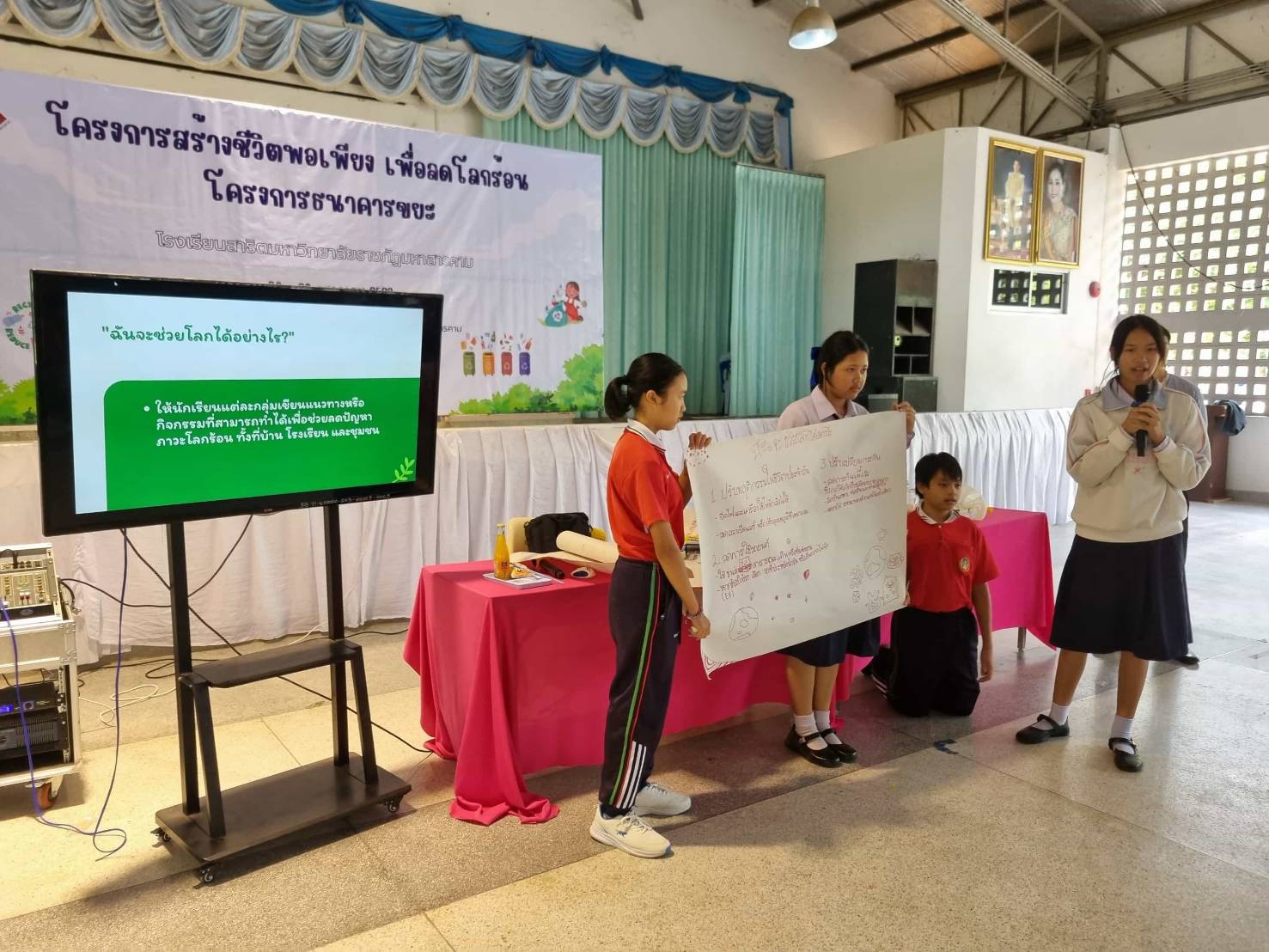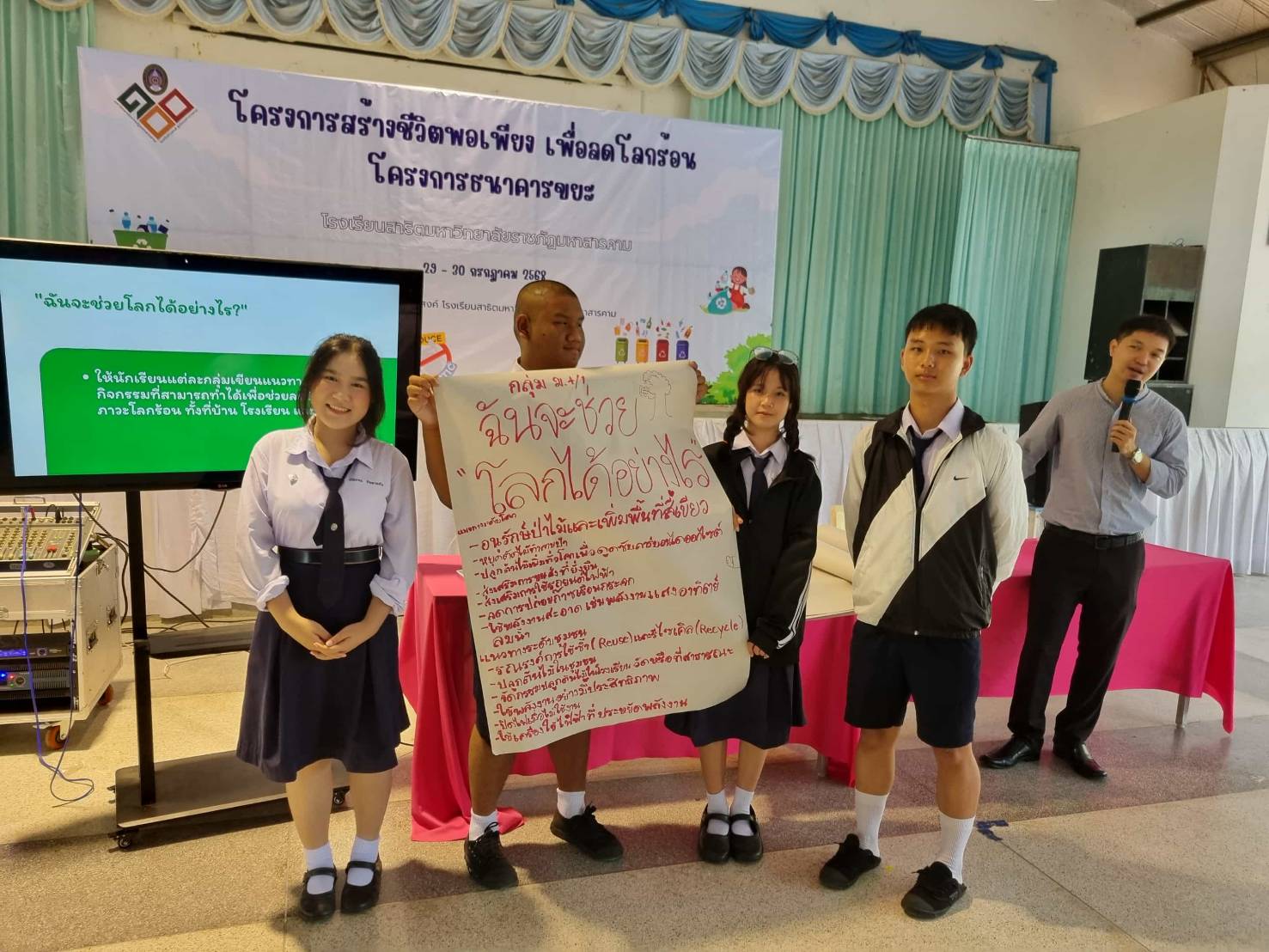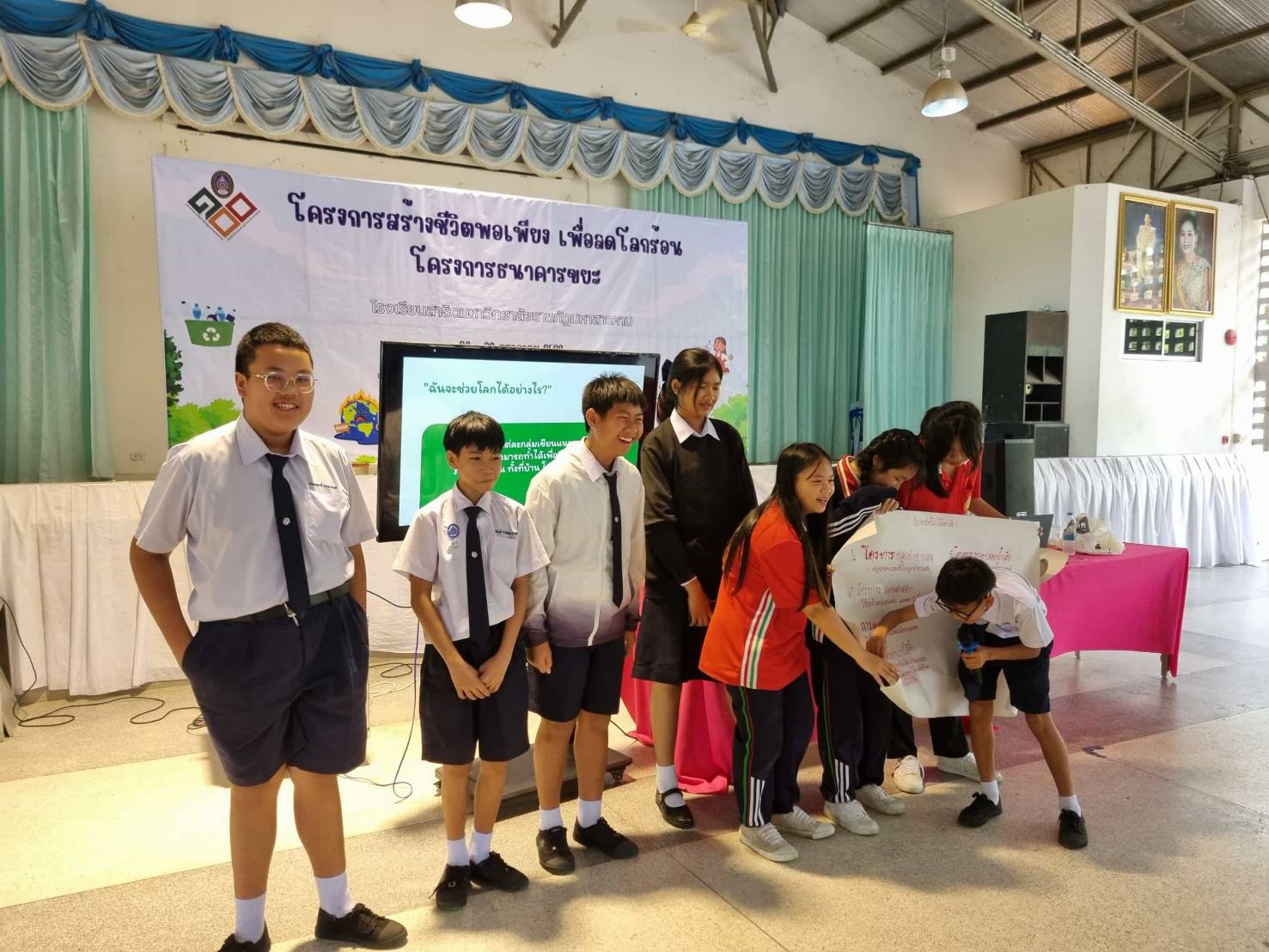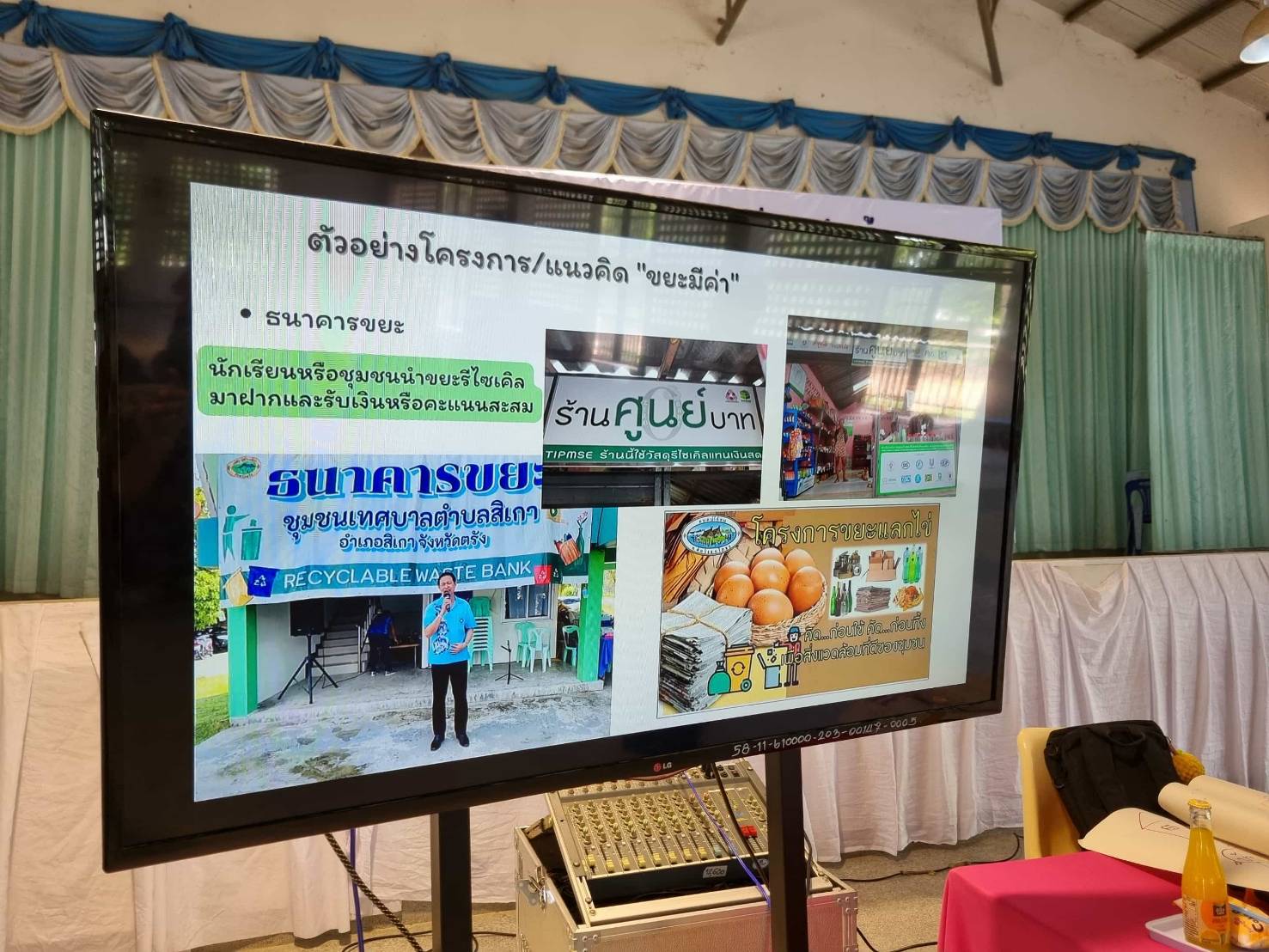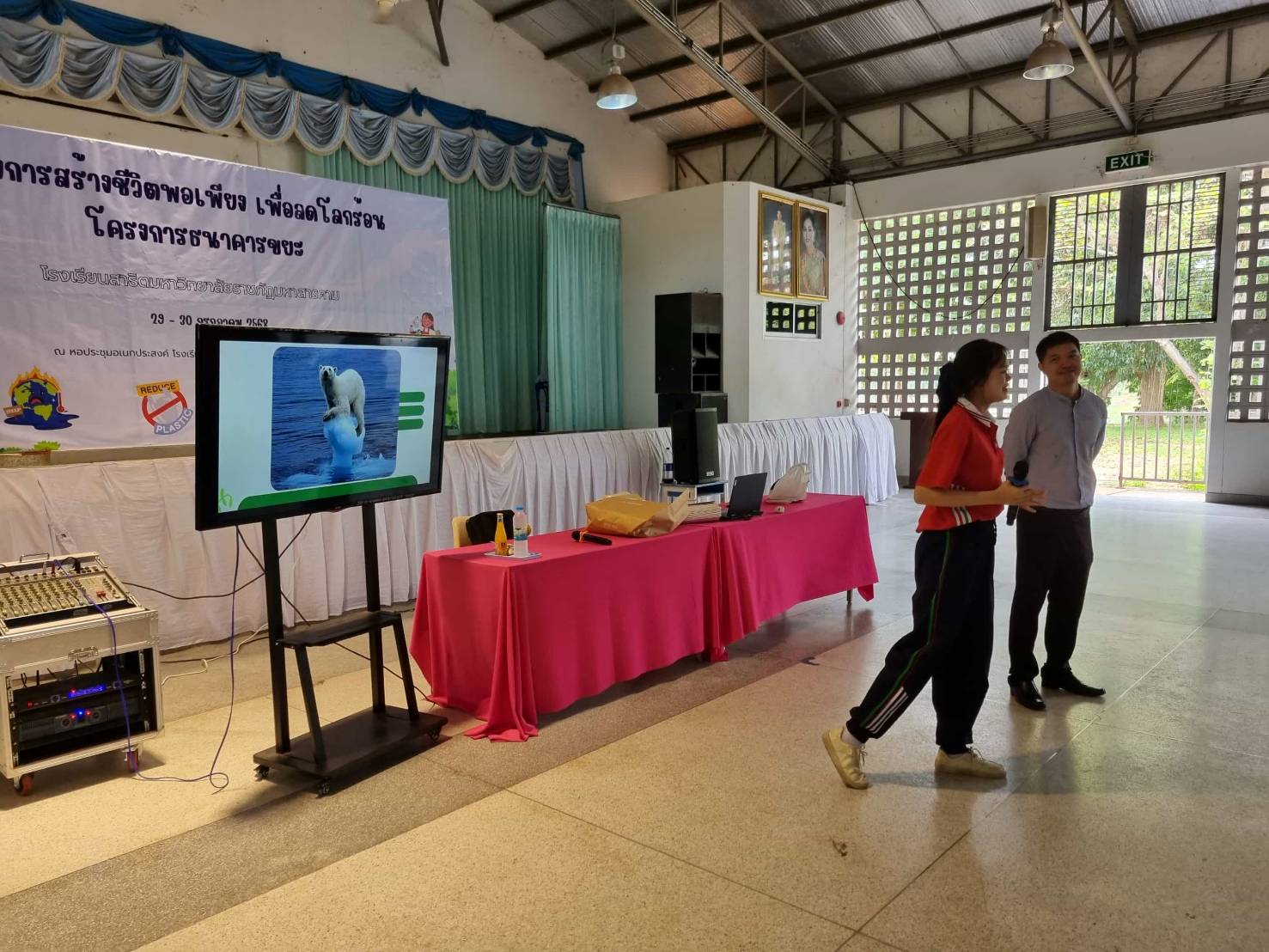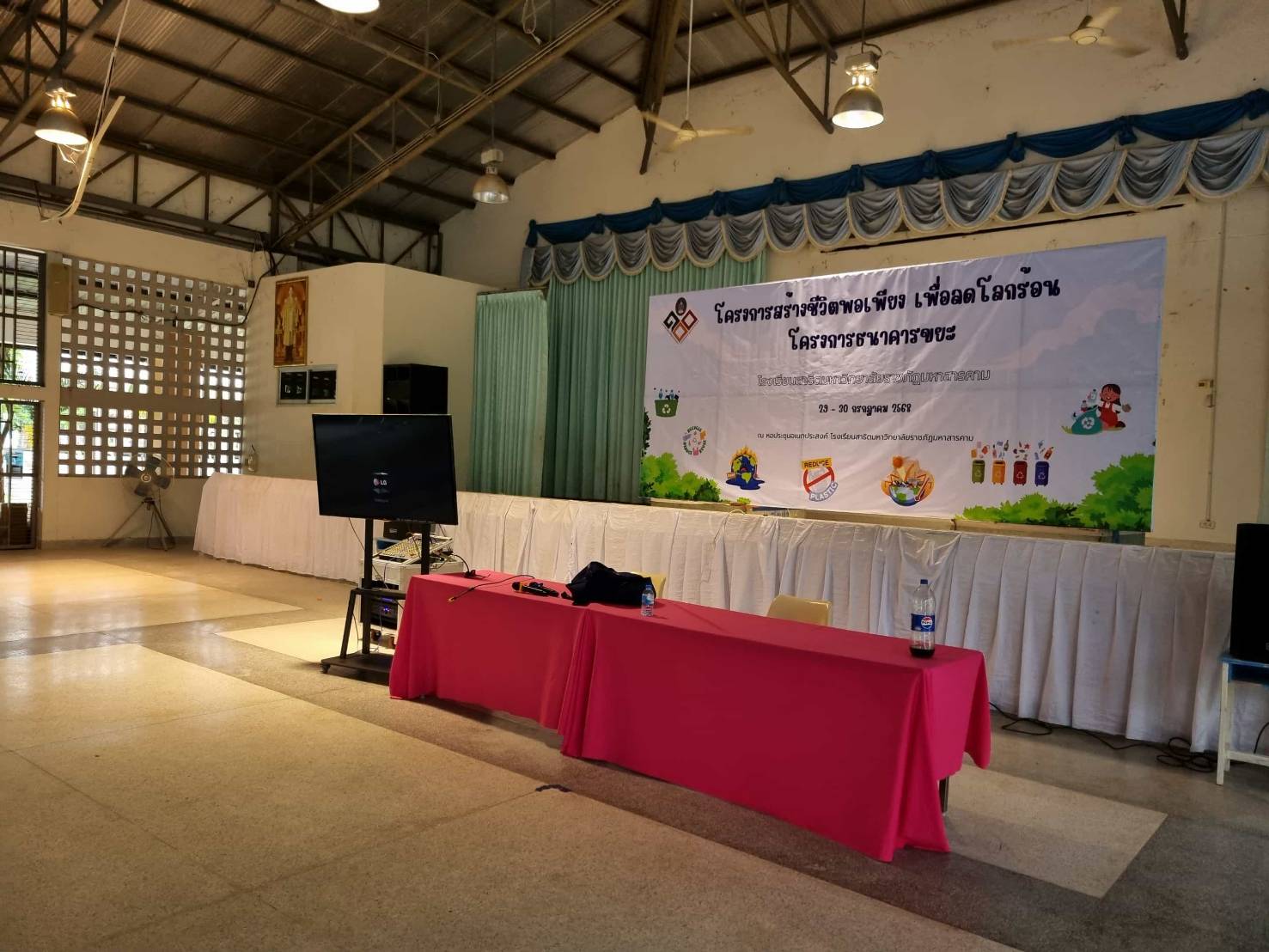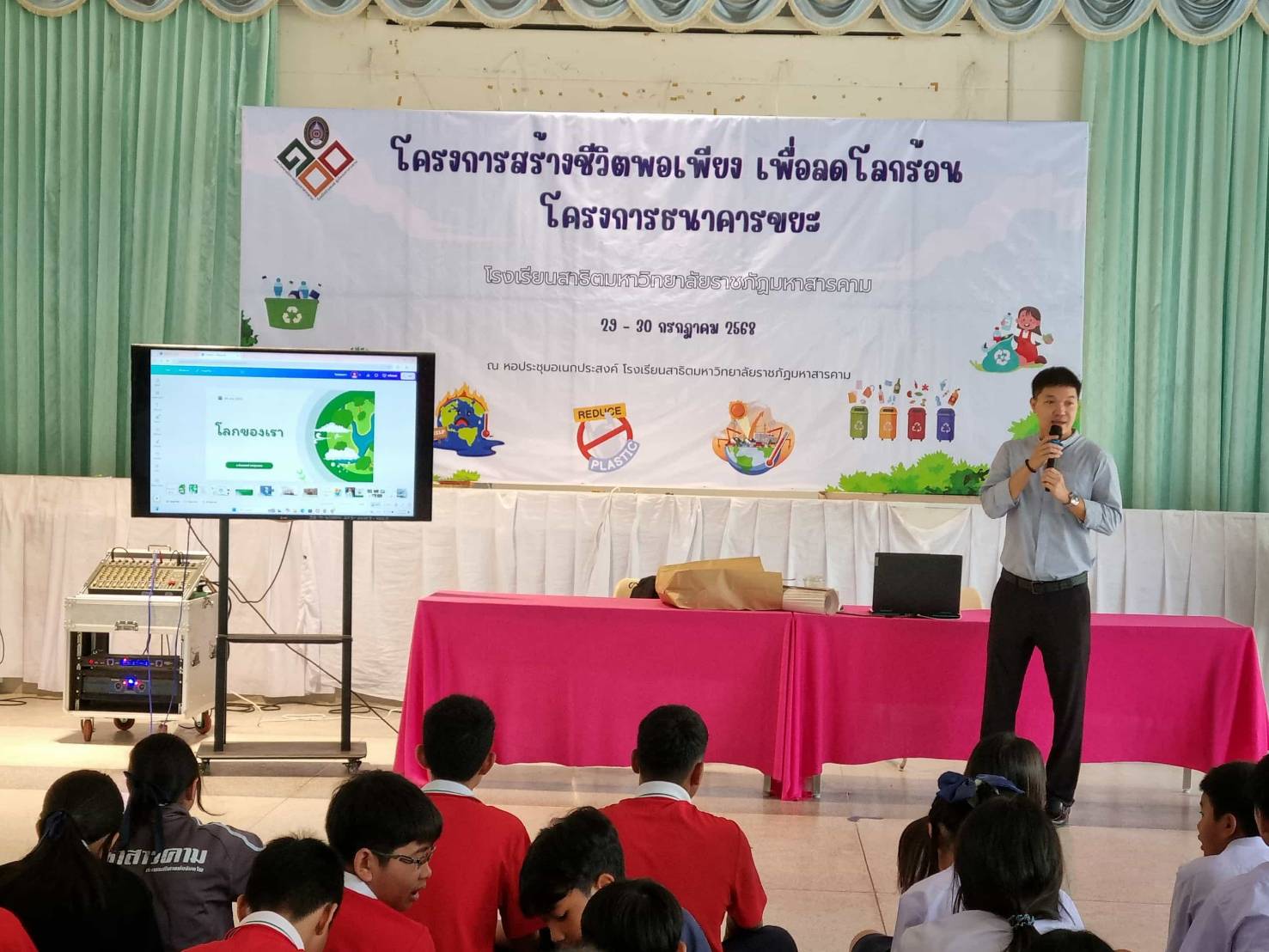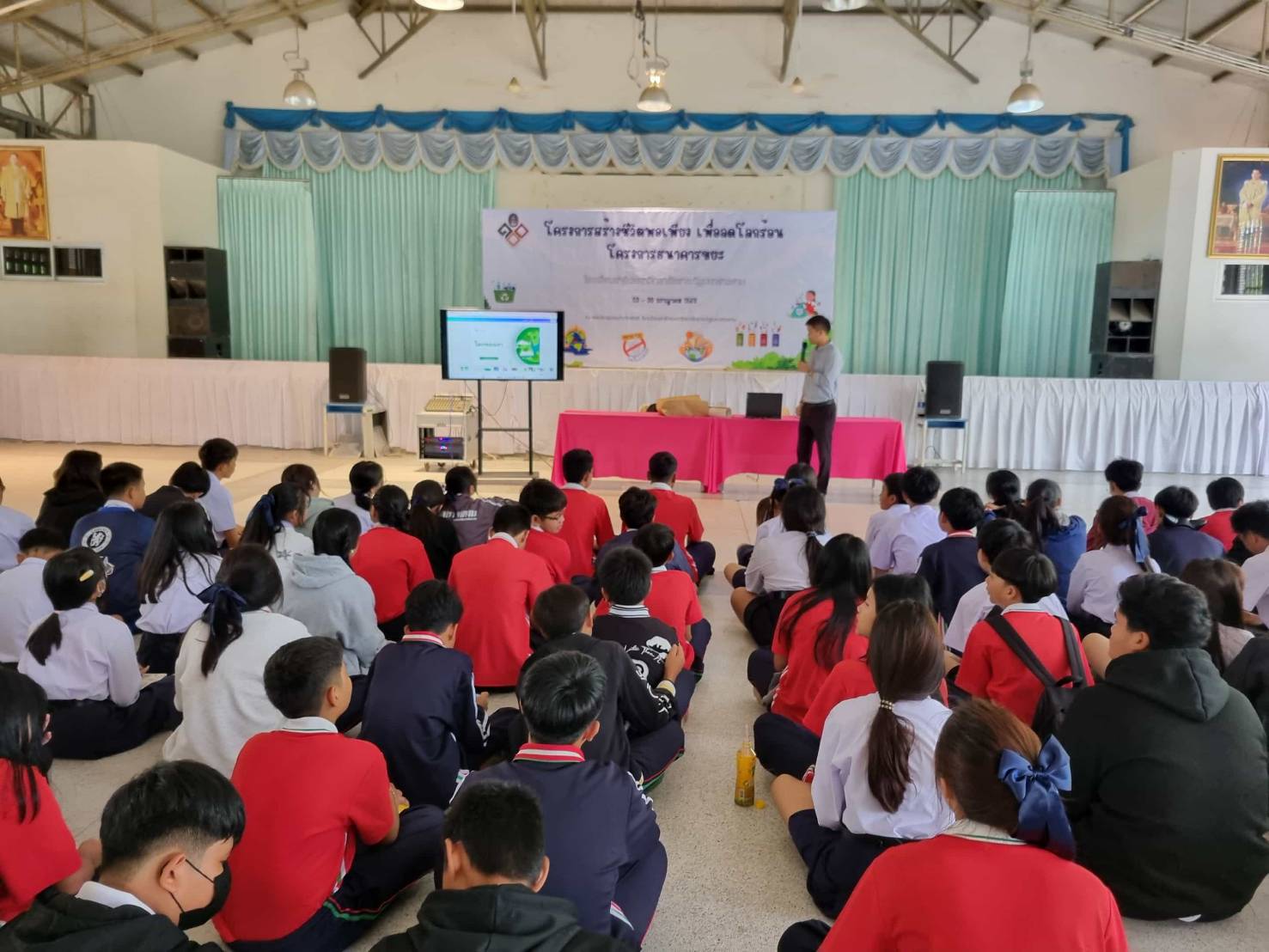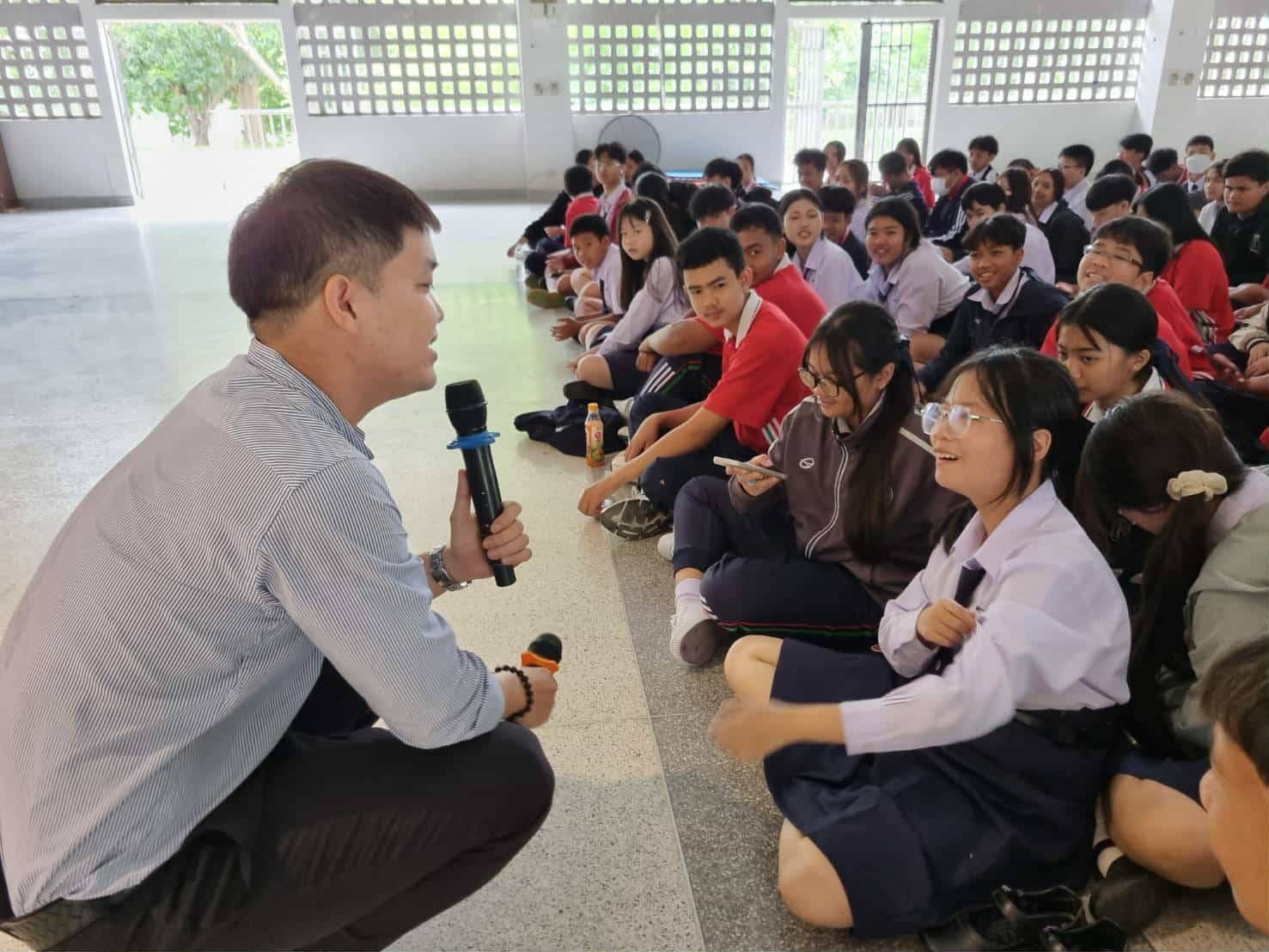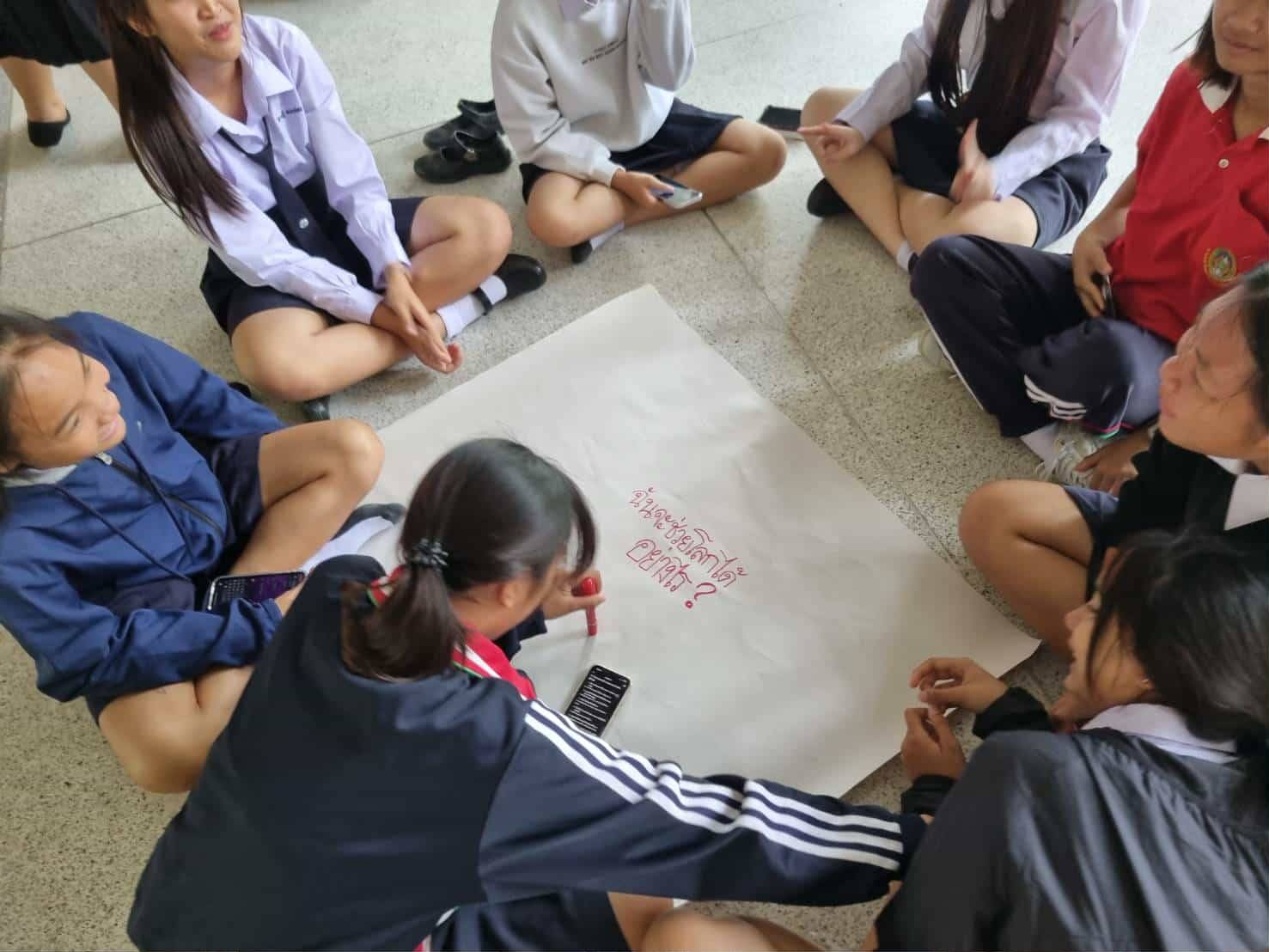
Sufficiency Living for Climate Change Mitigation
ผู้รับผิดชอบ ให้ข้อมูล : นางสาวกันยกร เกษบุรมย์
SDG ที่เกี่ยวข้อง
เป้าหมายย่อยความสอดคล้องกับยุทธศาสตร์มหาวิทยาลัย : พันธกิจสัมพันธ์เพื่อการพัฒนาท้องถิ่นอย่างสร้างสรรค
แหล่งงบประมาณ : งบประมาณแผ่นดิน
กลุ่มเป้าหมาย : นักศึกษา
Project Implementation Area : โรงเรียนสาธิตมหาวิทยาลัยราชภัฏมหาสารคาม ตำบล Talat อำเภอ Mueang Maha Sarakham จังหวัด Maha Sarakham 44000
Project Duration: July 29, 2025 – July 29, 2025
Objectives :
1. To enhance participants’ knowledge and understanding of the dangers posed by greenhouse gas emissions.
2. To enable participants to identify the sources and human activities that generate greenhouse gases, which contribute to global warming.
3. To promote awareness and understanding of methods for reducing greenhouse gas emissions into the environment.
Activities :
Workshop on “Greenhouse Gases—A Global Threat: Changing Lifestyles to Combat Climate Change”
Number of project participants: 653 people
Project Budget: 60,000 Baht
Results :
1. Participants will gain knowledge and understanding of greenhouse gases and be able to act as community leaders in disseminating related knowledge.
2. Participants will develop an understanding of behavioral adjustments that help reduce greenhouse gas emissions and will be able to apply this knowledge within their communities.
3. The project will promote environmental awareness and encourage public participation in environmental conservation through education and campaigns on the impacts of global warming.
Results society :
1. Activities designed to reduce greenhouse gas emissions not only mitigate climate change but also promote resource and energy efficiency, reducing institutional expenses. The initiative supports both:
- Low-Carbon Economy: Transitioning toward a low-emission economy through investment in clean technologies, renewable energy, and environmentally responsible production systems.
- Circular Economy: Minimizing the use of new resources by promoting reuse, repair, and recycling processes to reduce waste generation and greenhouse gas emissions from production activities.
2. The project contributes to the creation of a low-carbon society through behavioral changes in daily life—such as using fabric bags, conserving energy, reducing private car use, expanding green spaces in urban areas, and engaging in tree planting and reforestation to absorb carbon dioxide and enhance urban greenery.
Participation :
The project emphasizes collaboration among educational institutions, governmental agencies, private organizations, and civil society to promote systematic and sustainable solutions to global warming.
Project continuity :
A “Demonstration Plot for Sufficiency Economy and Environmental Sustainability” will be established as a practical learning site for students and community members. Educational signage and QR codes will be installed to provide self-guided learning opportunities for visitors.
Problems obstacles :
Some participants still lack a practical understanding of the Sufficiency Economy philosophy.
Improvement :
1. Seek cooperation and support from government agencies, private organizations, and environmental institutions
2. Utilize renewable and recyclable resources, such as recycled materials and organic waste, in project activities
Suggestions :
The University should establish a Sufficiency Economy and Environmental Learning Center to serve as a demonstration and educational site for students, staff, and surrounding communities.
